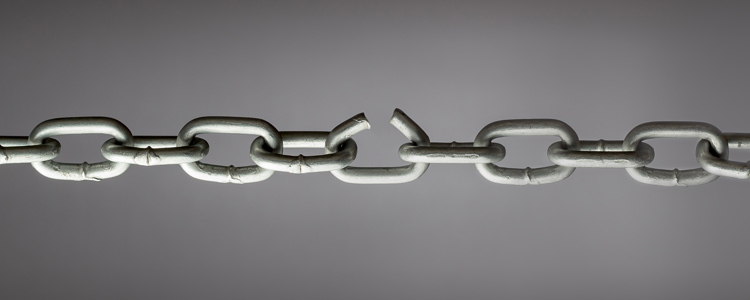Three tips for making your power plant more sustainable
You’ve heard this before, but it’s a message that bears repeating: To mitigate the effects of climate change, carbon emissions must be reduced. It’s that simple, and it applies to all of us – including the world’s power generating industries.
But cutting emissions by reducing global electricity production is definitely not an option. According to the 2021 World Energy Outlook from the International Energy Agency, global electricity demand will nearly double by 2050. We will simply need ever more power for the foreseeable future.
The challenge, then, is to find ways of producing energy while reducing carbon emissions – and there are solutions and approaches on the market today that help us do it. Here are three tips for making your power plant more sustainable!
Optimisation: make the most of your fossil fuel
Fossil-fuelled generators and engines will continue to play a key role in the energy mix for years to come, but that doesn’t mean they can’t run more sustainably. By optimising these assets, you generate maximum energy from your fuel and reduce carbon emissions per kilowatt generated. Here are a few ideas for asset optimisation:
- Check if your generators are oversized. If one or more smaller generators can deliver the power you need, you typically use less fuel.
- Check if your generators run optimally. A diesel generator typically runs best at around 70 to 80% of its maximum load (often called its optimal duty point). If it doesn’t, tweak your control setup to optimise operation – or distribute the load across several smaller generators instead of one bigger one.
- Update your control setup so your generators do not run constantly. If you only need peak power for a few hours every day, you don’t need to generate peak power all the time. Turning off generators is an effective way of reducing fuel consumption, emissions, and wear and tear.
- Finally, of course, make sure that service and maintenance is carried out as required. Here’s another truth that bears repeating: Well-kept equipment runs better for longer, and it does so more efficiently. Which means that you save fuel and costs, and cut emissions.
Hybridisation: go hybrid or renewable
Even though fossil fuels will be with us for years to come, there is no doubt that the most effective way of reducing climate impact is to move away from coal, gas, diesel, and HFO altogether. Renewables such as wind turbines and solar panels, and the control technologies to make efficient use of them, have come a long way, and there are now many ways of going hybrid or renewable without sacrificing reliability. Here are a few ideas for reducing carbon emissions with a hybrid or renewable power setup:
- An all-renewable setup with wind turbines or solar panels effectively eliminates emissions from your plant, and even more so if you add batteries for storing green power. The battery provides power when renewable production is low, giving you emission-free power round the clock (at least until the battery is depleted).
- Batteries are also great for hybrid power systems with fossil-fuelled sources and/or renewables: They provide extra electricity when the power requirement peaks so you do not need to start more generators. The extra battery power also helps generators run at their optimal duty point. And as with all-renewable setups, batteries can be used to store green energy for later use.
- On ships and offshore platforms, batteries can power propulsion and support your engines and generators. On shorter routes, entire crossings can be made on battery power – and if that battery power comes from renewable sources, you have effectively eliminated emissions from your ship. Another way of reducing emissions from ships and platforms is to use shore power whenever possible, shutting down engines and generators while in port.
Lifecycle extension: keep your assets running for longer
So far, we have discussed reducing emissions by cutting fuel consumption and using renewables. But the climate impact of power generating equipment is not limited to how much fuel it consumes. Manufacturing any kind of technical equipment impacts the climate because it requires raw materials and energy, and this applies to fossil-fuelled and renewable power generating equipment, too. And when you scrap a piece of equipment and replace it with a newer model, the result is more climate impact because that new model needs to be manufactured and shipped.
The solution is simple: The service life of many types of equipment can be prolonged through careful service and maintenance, and by upgrading key components such as controllers. By doing so, you drastically increase the total generated energy per asset and lower the climate impact per asset over its service life. By upgrading control systems, you can often also improve asset efficiency. For example, you can often improve the performance of wind turbines by installing new turbine controllers that do a better job of adjusting the turbine to current wind conditions. In this way, you don’t just prolong operation of the same assets; you optimise them, too.
The climate impact from manufacturing power generating equipment is unavoidable, but by prolonging asset service life, you get as much power as possible in return for those unavoidable emissions.
Draw on our years of experience
To sum up, there are ways of producing energy while reducing carbon emissions, and we hope the tips above have given you some fresh ideas on how to make your power plant more sustainable.
At DEIF, we have years of experience in optimising, transforming, and extending the service life of power generating equipment. If you would like to know more, click below to read some case studies that show how our solutions have helped customers in the land, marine, and wind power segments reduce climate impact. And of course, you are more than welcome to contact us to discuss your options!
Optimisation: Upgraded Paraguay pusher tug cuts fuel consumption by 3% annually
Hybridisation: Hybrid power rental asset uses up to 30% less fuel
Lifecycle extension: Eurowind Energy expect to double wind turbine lifetime and optimise operation
Read our hybrid power guide
-

Contact us to discuss your options
- 90 years of energy pioneering
- Manufactured at the highest standards
- Superior quality
- Unmatched service and support
- Made in Denmark




